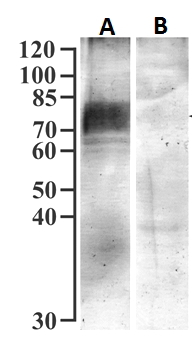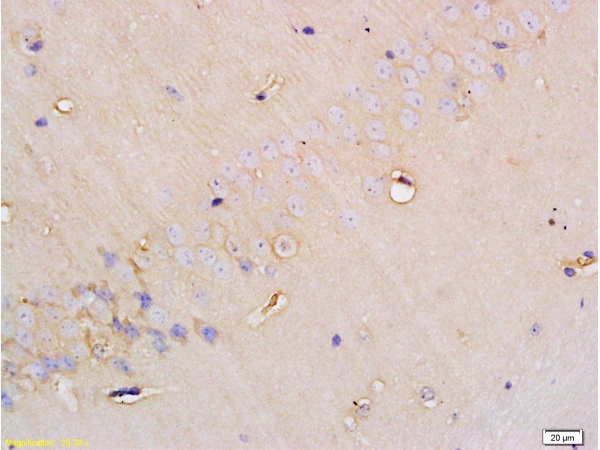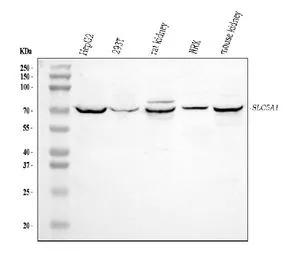SGLT1 antibody [N3C3]
GTX105367
ApplicationsImmunoFluorescence, Western Blot, ImmunoCytoChemistry, ImmunoHistoChemistry, ImmunoHistoChemistry Frozen, ImmunoHistoChemistry Paraffin
Product group Antibodies
TargetSLC5A1
Overview
- SupplierGeneTex
- Product NameSGLT1 antibody [N3C3]
- Delivery Days Customer9
- Application Supplier NoteWB: 1:500-1:3000. ICC/IF: 1:100-1:1000. IHC-P: 1:100-1:1000. *Optimal dilutions/concentrations should be determined by the researcher.Not tested in other applications.
- ApplicationsImmunoFluorescence, Western Blot, ImmunoCytoChemistry, ImmunoHistoChemistry, ImmunoHistoChemistry Frozen, ImmunoHistoChemistry Paraffin
- CertificationResearch Use Only
- ClonalityPolyclonal
- Concentration0.26 mg/ml
- ConjugateUnconjugated
- Gene ID6523
- Target nameSLC5A1
- Target descriptionsolute carrier family 5 member 1
- Target synonymsD22S675, NAGT, SGLT-1, SGLT1, sodium/glucose cotransporter 1, Na+/glucose cotransporter 1, high affinity sodium-glucose cotransporter, solute carrier family 5 (sodium/glucose cotransporter), member 1
- HostRabbit
- IsotypeIgG
- Protein IDP13866
- Protein NameSodium/glucose cotransporter 1
- Scientific DescriptionGlucose transporters are integral membrane proteins that mediate the transport of glucose and structurally-related substances across cellular membranes. Two families of glucose transporter have been identified: the facilitated-diffusion glucose transporter family (GLUT family), also known as uniporters, and the sodium-dependent glucose transporter family (SGLT family), also known as cotransporters or symporters (Wright et al., 1994 [PubMed 7823022]). The SLC5A1 gene encodes a protein that is involved in the active transport of glucose and galactose into eukaryotic and some prokaryotic cells.[supplied by OMIM]
- Storage Instruction-20°C or -80°C,2°C to 8°C
- UNSPSC12352203
References
- Torelli Hijo AH, Coutinho CP, Alba-Loureiro TC, et al. High fat diet modulates the protein content of nutrient transporters in the small intestine of mice: possible involvement of PKA and PKC activity. Heliyon. 2019,5(10):e02611. doi: 10.1016/j.heliyon.2019.e02611Read this paper







